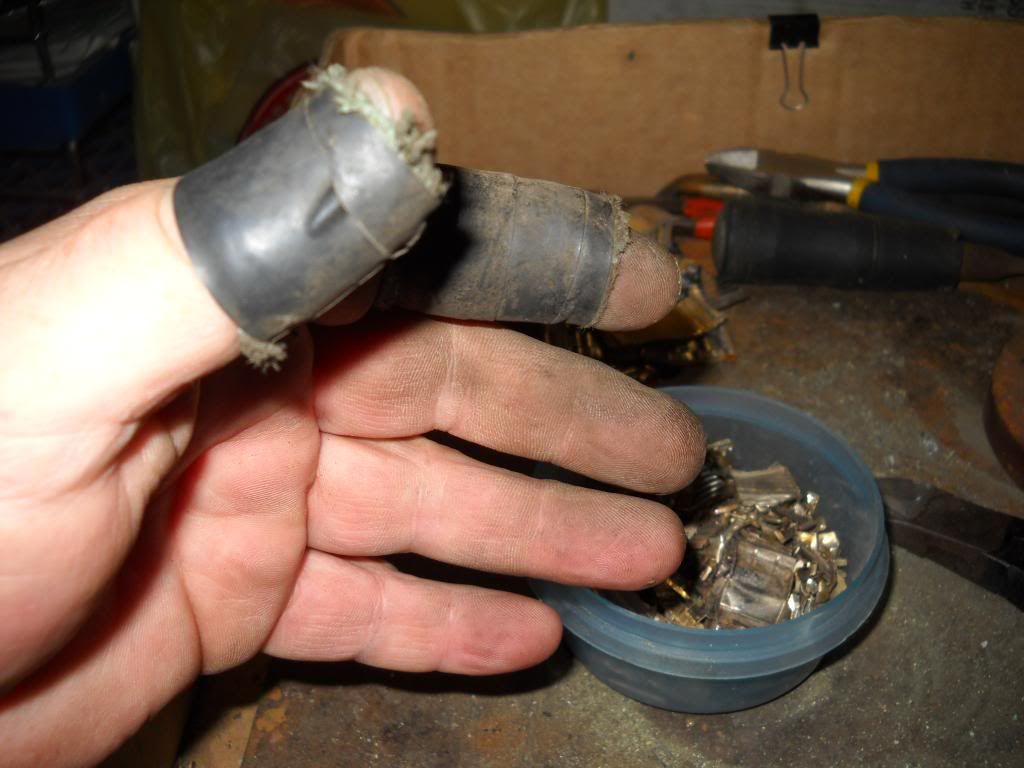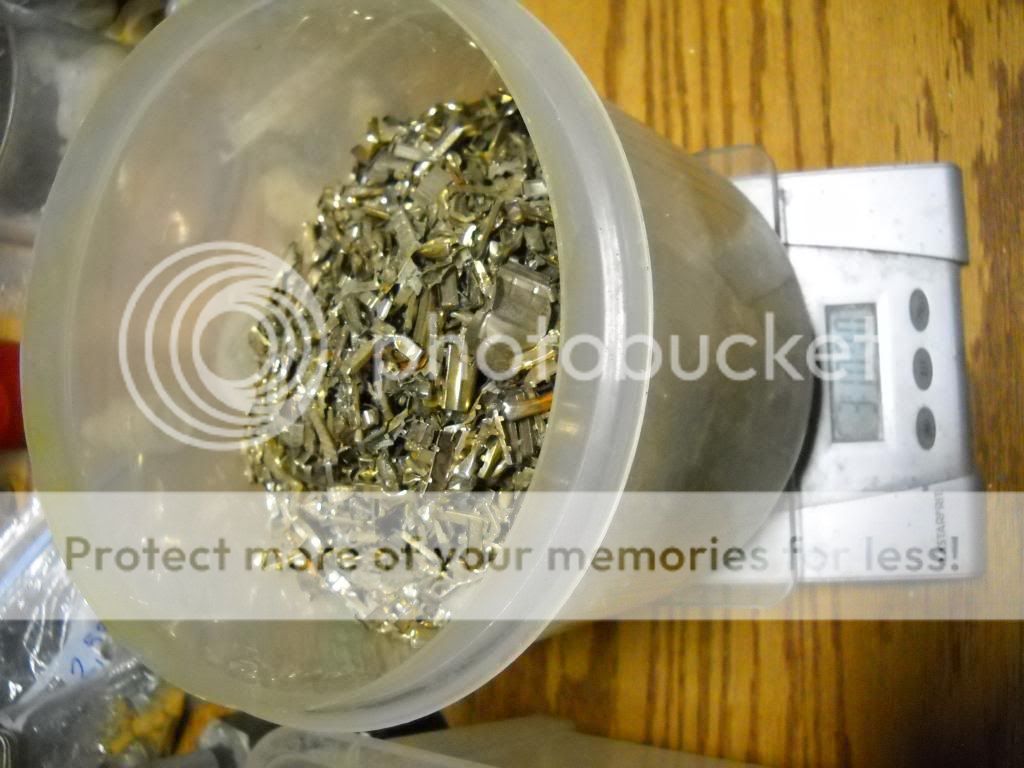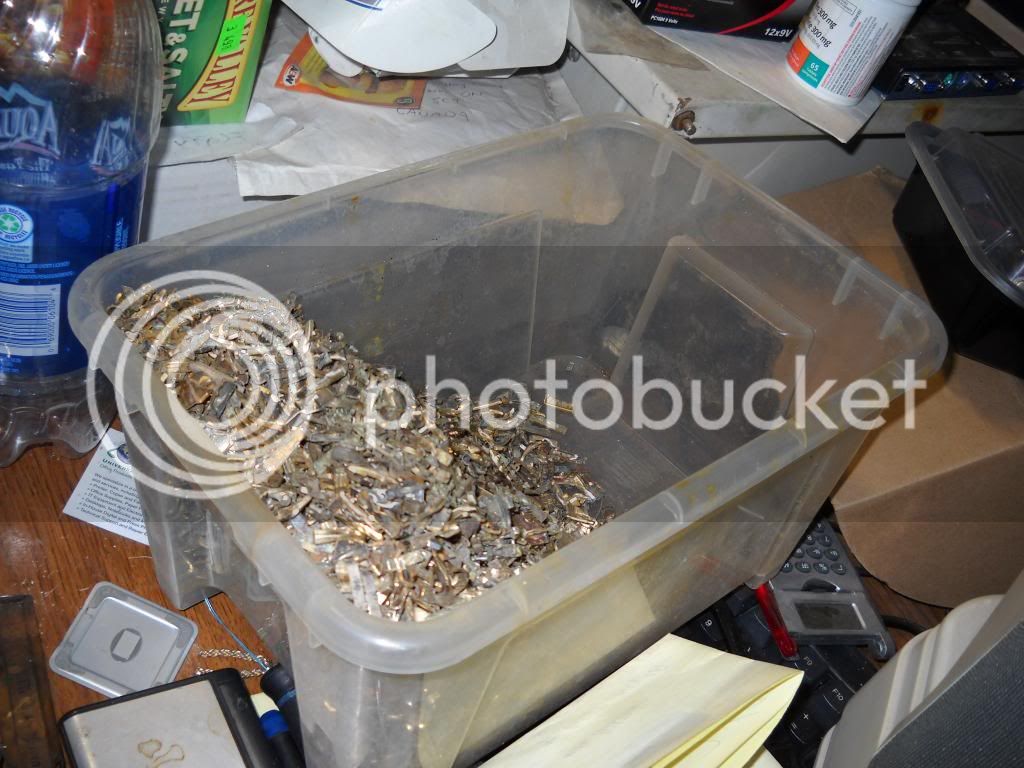2002valkyrie
Well-known member
- Joined
- Oct 3, 2009
- Messages
- 143
It seems that every time I process watch bands I end up irritating my wrist to the point of extreme fluid buildup. Has anyone came up with a process that has less labor involved?
















2002valkyrie said:Man I appreciate your tips but I guess what I need is some free labor, ha ha. I have around 150 lbs. of gold filled that has to be processed and my hands are getting tired. I think that I am going to have to build a mini shredder. I have worn out 2 pair of tin snips and 2 pair of side cutters and it seems that I am getting more and more behind every day.
4metals said:I have never had to cool the digestion reaction but I never added heat either. The relatively low percentage of reactive metal and the limiting quantity of HCl keeps things in check. Once the reaction stops digesting the non stainless alloy, the HCl is used up and another increment of up to 3% HCl can be added. The goal is to keep the available free HCl at a low percentage and the nitric will work with it to digest the soluble metal while it maintains the passivity of the stainless.
Thanks 4metals so in essence, if you were using stainless steel products with a much larger percentage of gold present then would the possibility of heat being generated increase with the gold content? Assuming of course that I'm reading what you are saying correctly and not interpreting it the wrong way
I'll bet you've got a few more of those up your sleeve. 8)4metals said:It is truly a niche solution to a refining problem.
4metals said:I have not used this process on stainless and gold filled before, although the same principles apply. Have you done this with watchbands Ralph?
If so please comment.
Enter your email address to join: